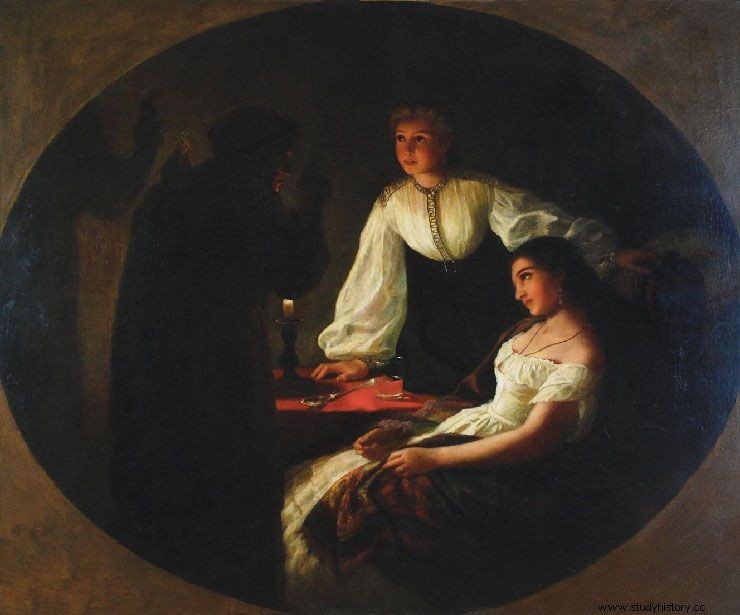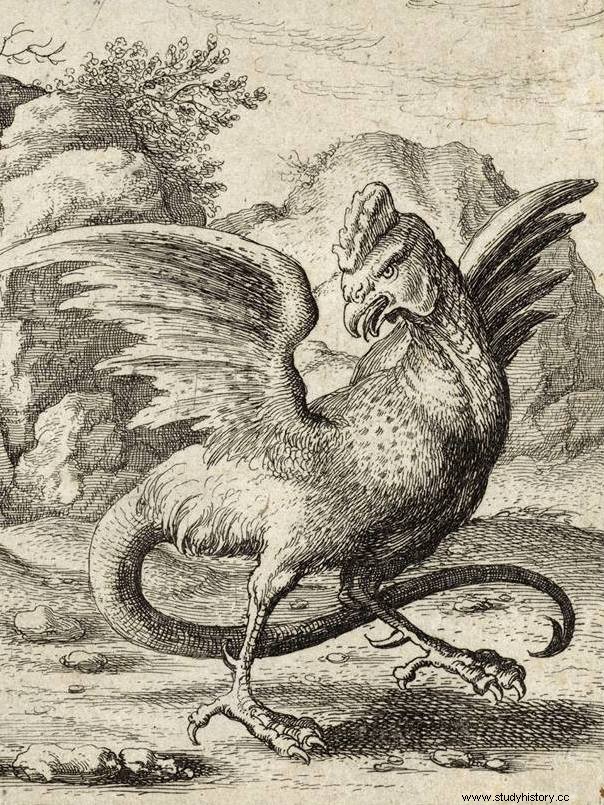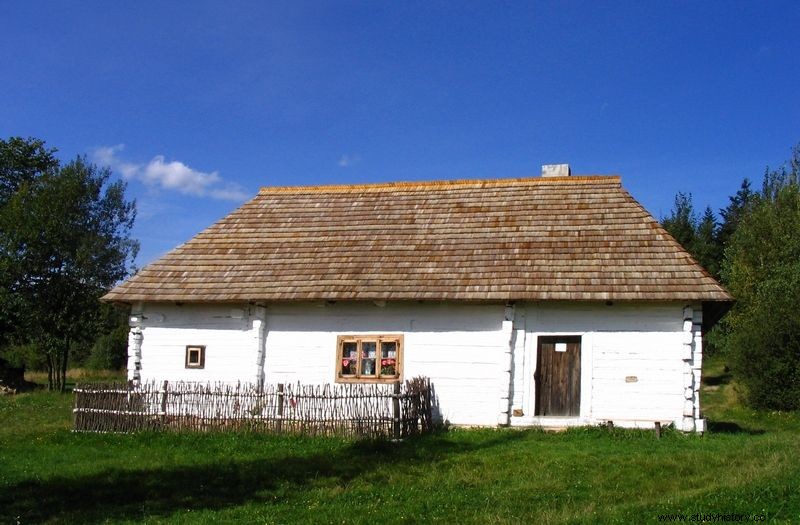Black magic, devilish frolics, and even returns of the dead. This is how our ancestors had fun before the New Year's Eve tradition was born. You don't believe? Check for yourself how the last night of the year was spent in the 19th century. Just be careful not to pay for the fun with your life ...
Most 19th-century Poles celebrated New Year's Eve in a very similar way. At dusk they went to the service and then returned home with a carol on their lips. They sat there until a solemn supper, almost a copy of Christmas Eve. However, the rest of the evening had little to do with the religious atmosphere.
Is an old man or a bastard waiting for me?
The girls gathered in the largest room, similarly to St. Andrew's, started divinations and spells. They poured water into a bowl or bucket, and lay the shells of nuts on its surface. If the little boats approached each other, the girl was about to meet the bachelor who would marry her.

The last night of the year resembled St. Andrew's Day in many ways. Henryk Siemiradzki's painting "Saint Andrew's Night" from 1867 (source:public domain).
At midnight, the virgins left their homes and ran to the fence. Each of them grabbed a peg and quickly returned to the thatched roof. Inside, they examined the achievements and based on them, they concluded what kind of husband they would find. The future partner could be tall, short, straight, humpbacked, skinny, fat ... If one of them came across a rotten piece of wood, they were fortune-telling a man of old age.
Old maids, wanting to change their fate, went to unfrozen water reservoirs. Their hands dipped in the icy water and reached the bottom. At home, they checked what they had in hand. If the number of pebbles was even, the woman was about to marry. Otherwise, she had to live alone for another year. If, on the other hand, she came across a live worm, it meant that she would get pregnant and give birth to a bastard before the next New Year's Eve, disgracing myself and my loved ones.
With shoes to the future
The custom of fortune-telling from a throwing shoe was also known. Young women would sit with their backs to the door and throw their shoes over their shoulder. If the slipper fell facing the door or upside down, the girl would soon leave the family home to get married.
Men, on the other hand, put their left shoes on over their right leg and went to sleep this way. It was believed that the dreams that such a delinquent would dream on this special night would be a journey back in time to the near future. And since the male youth did not shy away from alcohol, even the most ridiculous things could dream of dreams.

Left shoe. On New Year's Eve, it was a perfect fit for ... right leg (photo:Janek Pfeifer, license CC BY-SA 3.0).
Do you prefer to lose an eye or a life?
Other household members read the words of wax or lead. The liquid substances were poured into a vessel with ice water and the future was read from the thrombuses. In order not to be too easy, it had to be done properly.
A person wanting to find out what awaits him had to place a bowl of water on his head, and the other, who poured molten liquid, should keep his eyes closed so as not to form special shapes or figures.
More than once, there have been terrible accidents, painful burns, and even loss of sight or eyes. Many girls lost their charms as a result of such fun and the predicted future had to be quickly modified due to the disfigured face.
There were also known spells performed from church songbooks and from the Bible. The books were opened with closed eyes, announcing which verse on the left or right to read, and then putting their lives to fate.
Sometimes the predictions obtained in this way were humorous, other times they brought a pale fear to the unfortunate. Many, more believers, gave up their spirits by reading verses from the Old Testament or the Apocalypse of St. John.
Is it a pig-dog or is it a cat-dog?
Older household members also indulged in country magic. In a trough placed on straw, mature women spread a special dough without the addition of eggs and used it to form figurines of domestic animals that baked until they turned golden brown. Animals were given warm pastries so that they could hide well. Some of the figures were left behind and during the year were given to sick cattle as a miracle cure for all ailments.

It was enough to make a small cookie mistake and you already had a monster in the yard. Basilisk from a print by Wacław Hollar from the mid-17th century (source:public domain).
However, one had to be careful not to give a cow a figurine of a pig or a hen's horse. Such a mistake could have resulted in the birth of a deformed offspring or a previously unknown hybrid two species. This, on the other hand, could cast a bad curse on the entire farm.
The straw from under the basin was put on the head as a form of a magic hat. In such a covering, people used to climb the ladder backwards to the roof of the house to look at the chimney. In this way, you could see the faces of people for whom the Grim Reaper was to apply for in the near future. According to Maria Ziółkowska, in Wielbark in Masuria, one brave blacksmith dared to look into the chimney, where he saw himself. After leaving the roof he gave up his ghost immediately.
The tradition of eating poppy was also connected with the afterlife. It was believed that the poppy hides the power to transport a person to the afterlife. Sleep was treated as a partial death, from which it was possible, however, to return to the world of the living. The use of poppy seeds could also indicate an invisible addressee from the land of the dead.

Climb the chimney ... and die - this is one of the New Year's Eve classics. Chata w Kanoninie, province. Świętokrzyskie (photo:vindicator, license CC BY 2.0).
Turn the world upside down
As midnight approached, young men appeared in front of the houses and began a loud spectacle. The gentlemen stood at a considerable distance from each other and started shooting the whip. The householders, thanking them for their incredible skill, served them vodka and expressed their best wishes for the New Year. It was believed that the young men ensured the prosperity of the crops and the size of the harvest.
The fun did not end with the last bang of the whip. When the hosts went to bed, the young people started frolics and mischief on the New Year's Eve. The gates were moved outside the village in a silent manner, cattle were driven to the neighbor's farm, and even carts were placed on the roofs of the houses.
At dawn, such a sight raised smiles on the faces at first, but later caused quite a lot of trouble. These types of games often ended in unimaginable losses. Sometimes the landlord even had to put the thatched roof from scratch.
